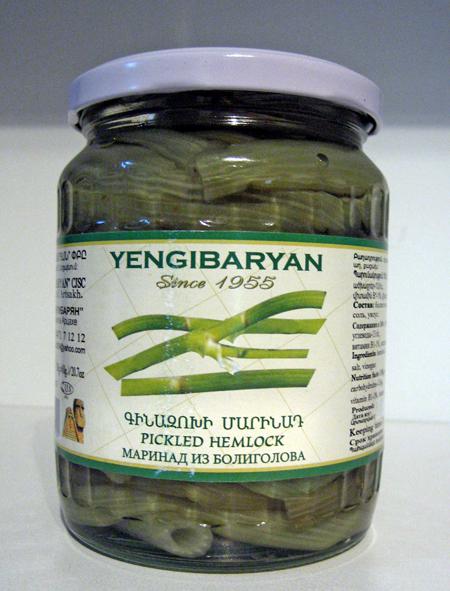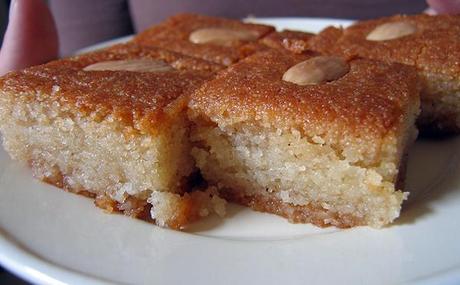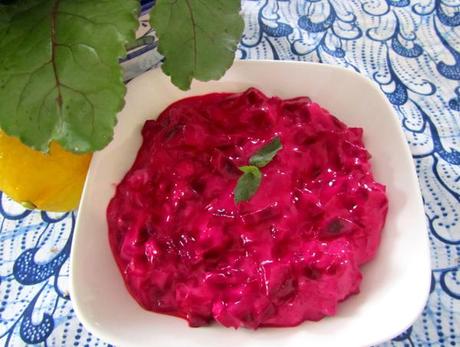Food shopping in foreign countries can be fun, mystifying, frustrating and dangerous. Just look what I found in a grocery store in Armenia one day. I kid you not. (Look at the bottom of the label.)

However, what follows here is a story of a culinary mystery I encountered in Palestine, where my mate and I lived for a couple of years, and it’s not about finding a deadly pickle, but about looking for milk. Strange as it may seem, finding milk in the land of milk and honey is not always easy. Here goes the story:
Miss Footloose’s Curds and Whey
One day my prince and I discover a grocery store we’ve not seen before on the Jerusalem road just outside of Ramallah. You never know what treasures are hidden in the various shops around town, and we need milk anyway, so we go in to reconnoiter. We find nothing very exciting, so I search the dairy case for milk. I see nothing that looks like milk.
When you move to the Middle East and you don’t have a clue about the Arabic language, you’re in for an adventure. Actually, many adventures. One of them is conquering the tricks of buying packaged food and processed food. You can’t always tell what’s in the cans and jars and plastic tubs. Read the labels, you say? Sure, you try it.
The dairy case, for one, is mind boggling. There’s a plethora of small tubs and cartons showing serene cows or green alpine meadows or rustic Swiss cottages none of which reveals the exact characteristics of the contents. The writing only offers blocky Hebrew letters or curlicue Arabic ones. Cottage cheese? Yogurt? Cream cheese? Ricotta? Sour cream?
I’ve discovered milk comes in plastic bottles with different colored foil tops indicating the various percentages of butterfat, but I do not see the now-familiar bottles with their colored foil tops in this store. I see half-gallon plastic jugs, or rather 2-liter jugs containing a white substance. The white-and-green label sports a picture of some sort of bovine. Not any dairy cow I’m familiar with (this one has elegantly curved horns) but a cow none the less. It must be milk.
The next morning my spouse takes the jug out of the fridge with the intention of pouring some milk on his cereal only to find that the content is thick and won’t pour out of the opening.
I make a face. Yuk, the milk must have gone bad. I take a small spoon and insert it through the neck of the jug. I scoop some of the white stuff out, sniff it, then taste it carefully lest I poison myself. (Let it not be said I don’t take risks in my exotic expat life.) It’s sour and disgusting. Rotten milk. Gross!
“I’ll take it back and ask,” my man says, not convinced it’s bad milk. Could it be yogurt?
“It’s nasty,” I say. “Besides, why put yogurt in a plastic jug with a smallish opening meant for pouring liquids?” I ask, trying for logic, but an hour later we know the verdict: We, a household of two, now own 2 liters of plain yogurt, somewhere in the vicinity of eight and a half cups, this in addition to the two cups I already have in the fridge. I take a fortifying breath, insert another small spoon and have another taste.
It is amazing the tricks the brain can play even with a normal, intelligent person. The thick substance has magically morphed into yogurt. And good yogurt, too! It’s delicious!
“Well,” says my man, ”I guess we’ll eat it.”
We start by eating it for breakfast with fruit and cereal. But 10 cups of yogurt is a lot, dear readers. So I set out on a quest to find recipes that use yogurt. I make a sweet avocado lassi which I remember from my Indonesian sojourn. It is delicious, but you can only drink so much of the stuff. I make an Egyptian semolina cake and freeze most of it.

I find recipes for Greek tzatziki sauce, Persian beet-and-yogurt dip, and a Swiss muesli recipe in which oats are soaked in yogurt overnight. Most recipes using any considerable amount of yogurt render food quantities large enough to feed a crowd. So the only solution is to throw a party.
I don’t ask anybody if they like yogurt.
For a starter I make the Persian beet dip, using two cups of yogurt. It is a very dramatic magenta, not usually a color you associate with food, but everybody loves it (recipe at end of post).

We barbecue a leg of lamb Greek style, serve it with a tzatziki, yogurt sauce. Afterward we eat a lemon-yogurt mousse, a recipe I have created myself. It all goes. Everybody eats with gusto and they all go home awash in lactobacillus acidophilus, bulgaricus and streptococcus thermophilus. As you can tell, I did my research.
And no, nobody dies. Not even from the streptococcus thermophilus.
I have one half cup of yogurt left, and I know what to do with it. I’ve found a Turkish recipe I just have to try. You mix yogurt with garlic and salt, spread it out on two plates, poach some eggs, put them on top of the yogurt and pour melted butter mixed with red pepper and paprika over it all. It’s an appetizer or lunch dish, but to me it looks like breakfast, garlic notwithstanding.
I fix this the next morning. It’s the weekend and my mate is home, so no offending co-workers with garlic breath. He looks at his plate and glances up at me. “I expect this is yogurt I’m seeing here?”
“Of course,” I say.
He begins to eat. He is a brave man, but then in his travels around the world he has eaten stranger things than the ones I’ve been feeding him the last ten days. But now I’m done. It’s been an international yogurt fest, but, yummy as it all was, I really, really don’t want to look at yogurt again for a while. A long while.
“This is very interesting,” he says, spooning up the garlicky yogurt eggs.
“I have something to tell you,” I say solemnly.
He glances up from his plate. “Yes?”
“All the yogurt is gone.”
He smiles reassuringly. “Don’t worry,” he says. “I’ll pick up some more when I get the newspaper.”
***
Borani-e-Labu
Beet and Yogurt Dip
Your guests will be intrigued, possibly terrified, by the striking magenta color of this dip. Many variations are found in the Middle East. Borani-e-Labu is the Persian name for it and in Turkey it is known as Yogurtlu Pancar. The photo above was taken by me the day before publishing this post. I had beets, I had yogurt, and I remembered this story, and here you have it.
1 lb (1/2 kg). young summer beets
2 cups (0.5 L) Greek yogurt, or drained whole milk yogurt (or labneh)
2 cloves garlic, pressed
2 ½ tablespoons lemon juice
½ teaspoon salt
Chopped parsley or mint for garnish
1. Trim the leaves from the beets, leaving an inch (2.5 cm) or so of the stalks to keep the beets from “bleeding.” Put them whole in a sauce pan, cover with water and bring to a boil. Lower heat and simmer for 30 minutes or until the beets are firm-tender. Cool.
2. Slip the skins off the beets and cut them in small dice, or grate coarsely.
3. Mix the beets into the yogurt, adding. garlic, salt and lemon juice. Garnish with chopped parsley or mint.
4. Serve with pita bread. Serves an adventurous crowd of 8 or more.
VARIATIONS: You may add other seasonings such as 2 tablespoons finely diced onion, 2 tablespoons olive oil, or 2 tablespoons tahini. Instead of finely dicing the beetroot, slice them, place them on top of the yogurt mixed with garlic, salt and lemon juice and serve the dish as a salad or light lunch dish.
* * *

